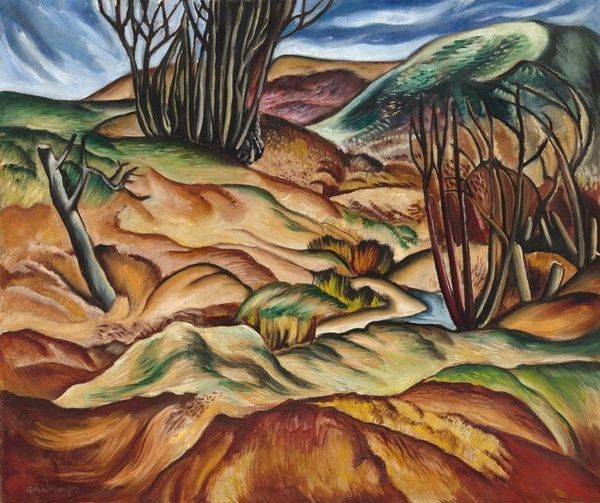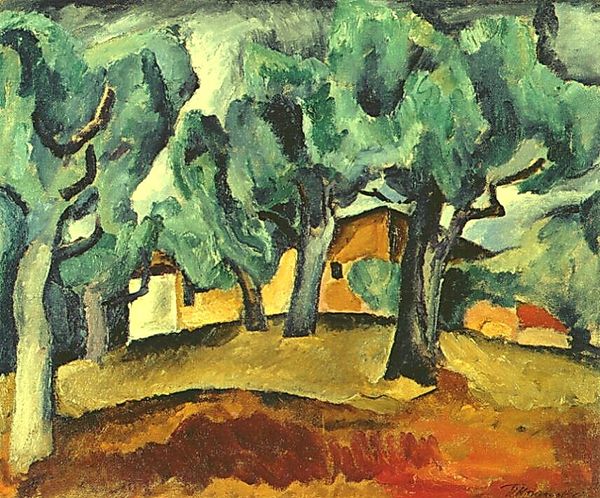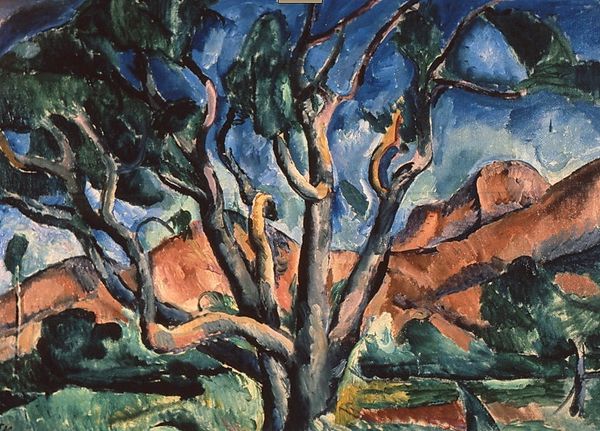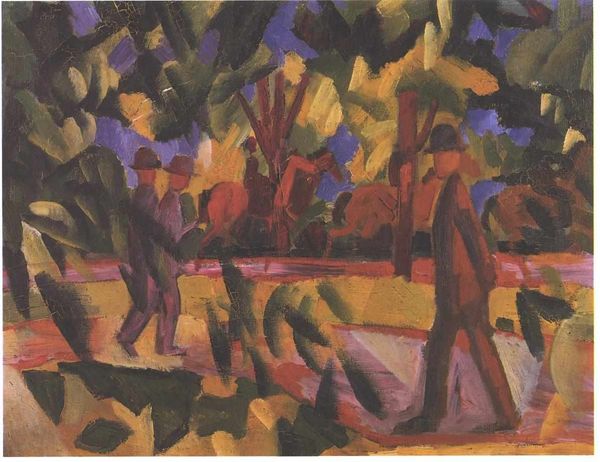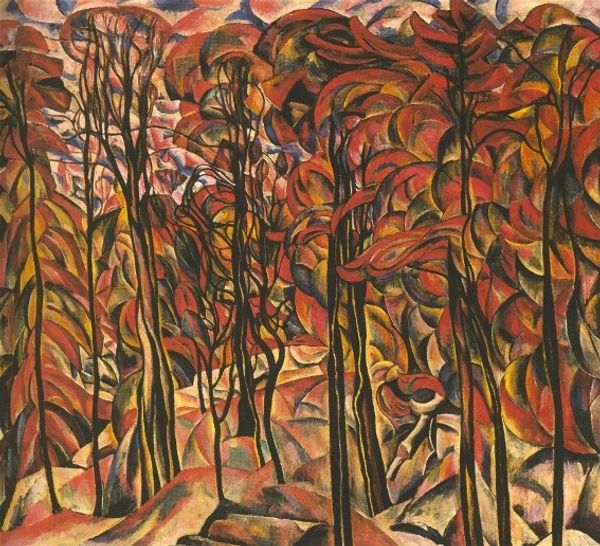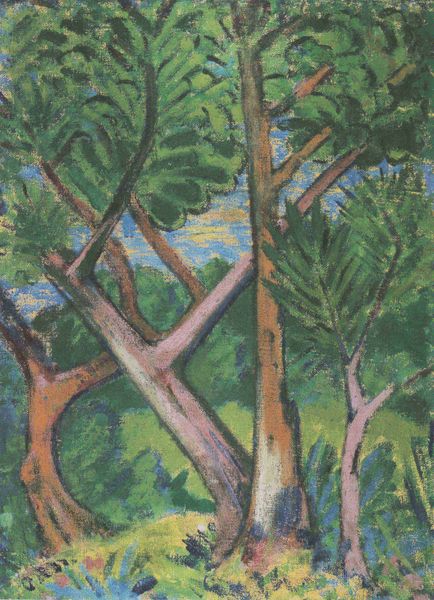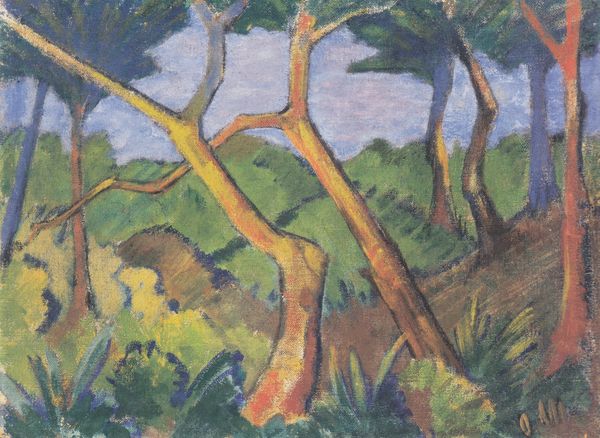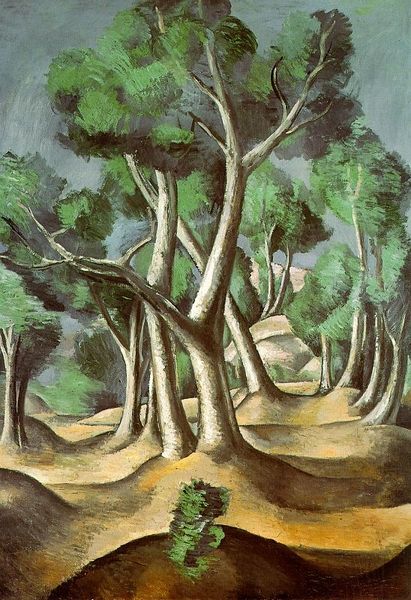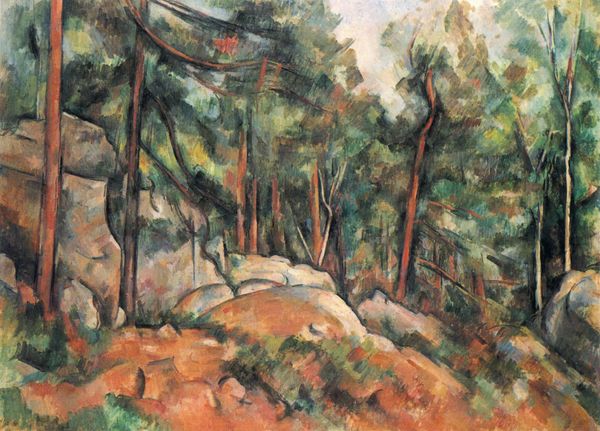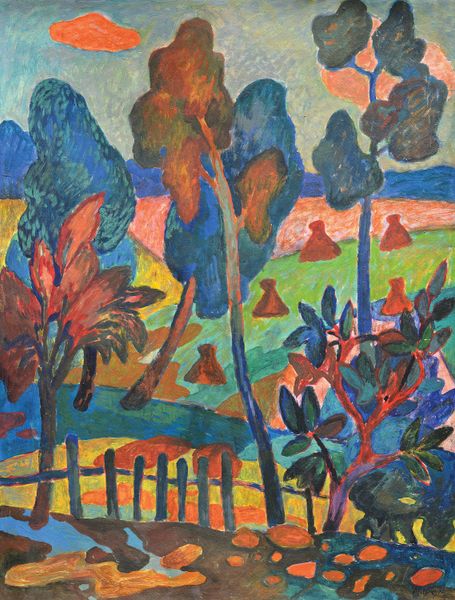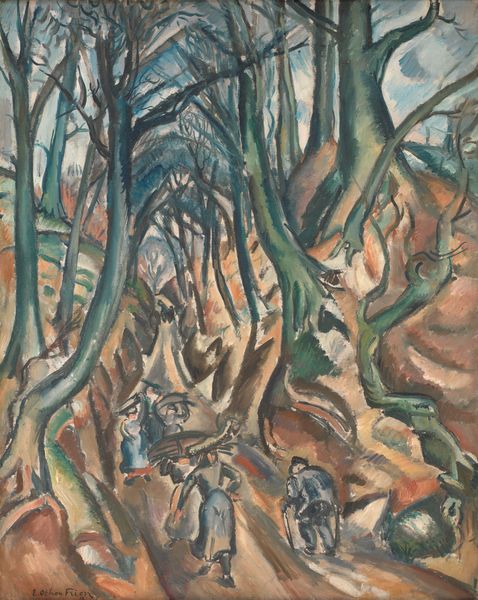
Copyright: Hale Woodruff,Fair Use
Curator: This landscape, created by Hale Woodruff in 1935, pulses with vibrant energy. There is a sense of raw vitality, wouldn't you agree? Editor: It definitely grabs you. My first thought is… slightly unsettling. It's beautiful, certainly, but there's something almost agitated about the way he's rendered the trees and hills. Curator: Perhaps that unease comes from the artist’s embrace of Fauvist and abstract expressionist traditions. While Woodruff clearly captures nature, it's not a simple representation. He is imbuing the natural scene with expressive color and vigorous brushwork, as though trying to tap into some underlying spirit. We have an almost untamed symbolism here. Editor: I think it goes deeper than aesthetics. Woodruff, as a Black artist, painted this during the Jim Crow era in the American South. He studied with Henry Ossawa Tanner, so the cultural significance of place and belonging were essential to his artistic development. Can we view this as simply an innocent landscape? I see that "agitation" as speaking to the complexities of existing as a Black man in that place and time, and those contorted tree limbs become a symbolic echo of forced adaptation to a hostile environment. Curator: That's a fascinating interpretation. Certainly, his social awareness profoundly shaped Woodruff's career and imagery. And nature as refuge – the land holding a promise denied elsewhere in society – is a resonant symbol. Perhaps that accounts for the intense, almost fervent green that dominates the canvas. What seems to be abstract expressionism carries so many historical layers here. Editor: Exactly. Even the Fauvist color choices - the reds and yellows – become imbued with the emotional tenor of the period. It’s a vibrant scene, yes, but the colors almost shout, don't they? The seemingly straightforward representation becomes an incredibly complex layered message once you acknowledge and comprehend that historical background. Curator: It's true, the history provides a profound way to understand its depth. "Georgia Landscape" becomes a vessel, containing not just an image of a place, but also memories and a statement. A very eloquent statement, at that. Editor: Ultimately, Woodruff has used the landscape genre to address difficult subjects in a profound way. Hopefully this artwork opens conversations about representation and the realities that exist beyond what one might immediately observe.
Comments
No comments
Be the first to comment and join the conversation on the ultimate creative platform.
